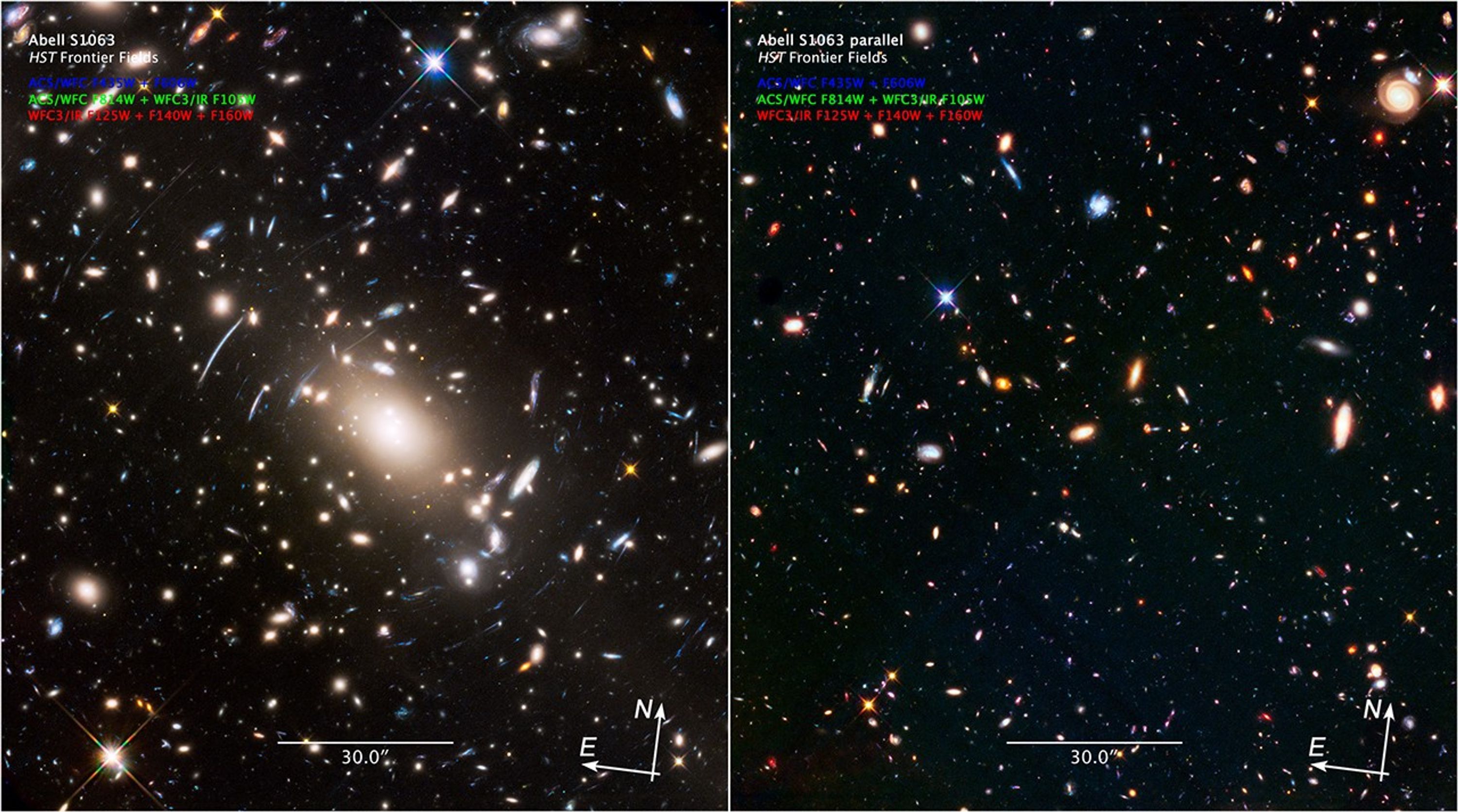1 min read
NASA’s Hubble Looks to the Final Frontier

The Hubble image unveils a very cluttered-looking universe filled with galaxies near and far. Some are distorted like a funhouse mirror through a warping-of-space phenomenon first predicted by Einstein a century ago.
In the center of the image is the immense galaxy cluster Abell S1063, located 4 billion light-years away, and surrounded by magnified images of galaxies much farther.
Thanks to Hubble's exquisite sharpness, the photo unveils the effect of space warping due to gravity. The huge mass of the cluster distorts and magnifies the light from galaxies that lie far behind it due to an effect called gravitational lensing. This phenomenon allows Hubble to see galaxies that would otherwise be too small and faint to observe. This "warp field" makes it possible to get a peek at the very first generation of galaxies. Already, an infant galaxy has been found in the field, as it looked 1 billion years after the big bang.
This frontier image provides a sneak peak of the early universe, and gives us a taste of what the James Webb Space Telescope will be capable of seeing in greater detail when it launches in 2018.
The cluster contains approximately 100 million-million solar masses, and contains 51 confirmed galaxies and perhaps over 400 more.
About the Object
- R.A. PositionR.A. PositionRight ascension – analogous to longitude – is one component of an object's position.22h 48m 44.39s
- Dec. PositionDec. PositionDeclination – analogous to latitude – is one component of an object's position.-44° 32' 48.5"
- ConstellationConstellationOne of 88 recognized regions of the celestial sphere in which the object appears.Grus
- DistanceDistanceThe physical distance from Earth to the astronomical object. Distances within our solar system are usually measured in Astronomical Units (AU). Distances between stars are usually measured in light-years. Interstellar distances can also be measured in parsecs.4 billion light-years (1.2 billion parsecs)
About the Data
- Data DescriptionData DescriptionProposal: A description of the observations, their scientific justification, and the links to the data available in the science archive.
Science Team: The astronomers who planned the observations and analyzed the data. "PI" refers to the Principal Investigator. - InstrumentInstrumentThe science instrument used to produce the data.HST>ACS/WFC, HST>WFC3/IR
- Exposure DatesExposure DatesThe date(s) that the telescope made its observations and the total exposure time.December 2005 – May 2016
- FiltersFiltersThe camera filters that were used in the science observations.HST>ACS/WFC: F435W (B), F606W (R), and F814W (I) HST>WFC3/IR: F105W (Y), F125W (J), F140W (JH), and F160W (H)
- Object NameObject NameA name or catalog number that astronomers use to identify an astronomical object.Abell S1063 Frontier Field
- Object DescriptionObject DescriptionThe type of astronomical object.Galaxy Cluster and Gravitational Lens
- Release DateJuly 21, 2016
- Science ReleaseNASA’s Hubble Looks to the Final Frontier
- Credit

This image is a composite of separate exposures acquired by the WFC3/IR and ACS/WFC instruments. Several filters were used to sample various wavelengths. The color results from assigning different hues (colors) to each monochromatic (grayscale) image associated with an individual filter. In this case, the assigned colors are: Blue: ACS/WFC F435W (B) + F606W (R) Green: ACS/WFC F814W (I) + WFC3/IR F105W (Y) Red: WFC3/IR F125W (J) + F140W (JH) + F160W (H)

Related Images & Videos

Parallel Field Image of Abell S1063
Hubble observed galaxy cluster Abell S1063 with the Advanced Camera for Surveys (ACS) using visible-light filters. Simultaneously, Hubble was able to observe a field parallel to Abell S1063 with the Wide Field Camera 3 (WFC3) using infrared filters. Six months later, the...
Share
Details
Claire Andreoli
NASA’s Goddard Space Flight Center
Greenbelt, Maryland
claire.andreoli@nasa.gov






























